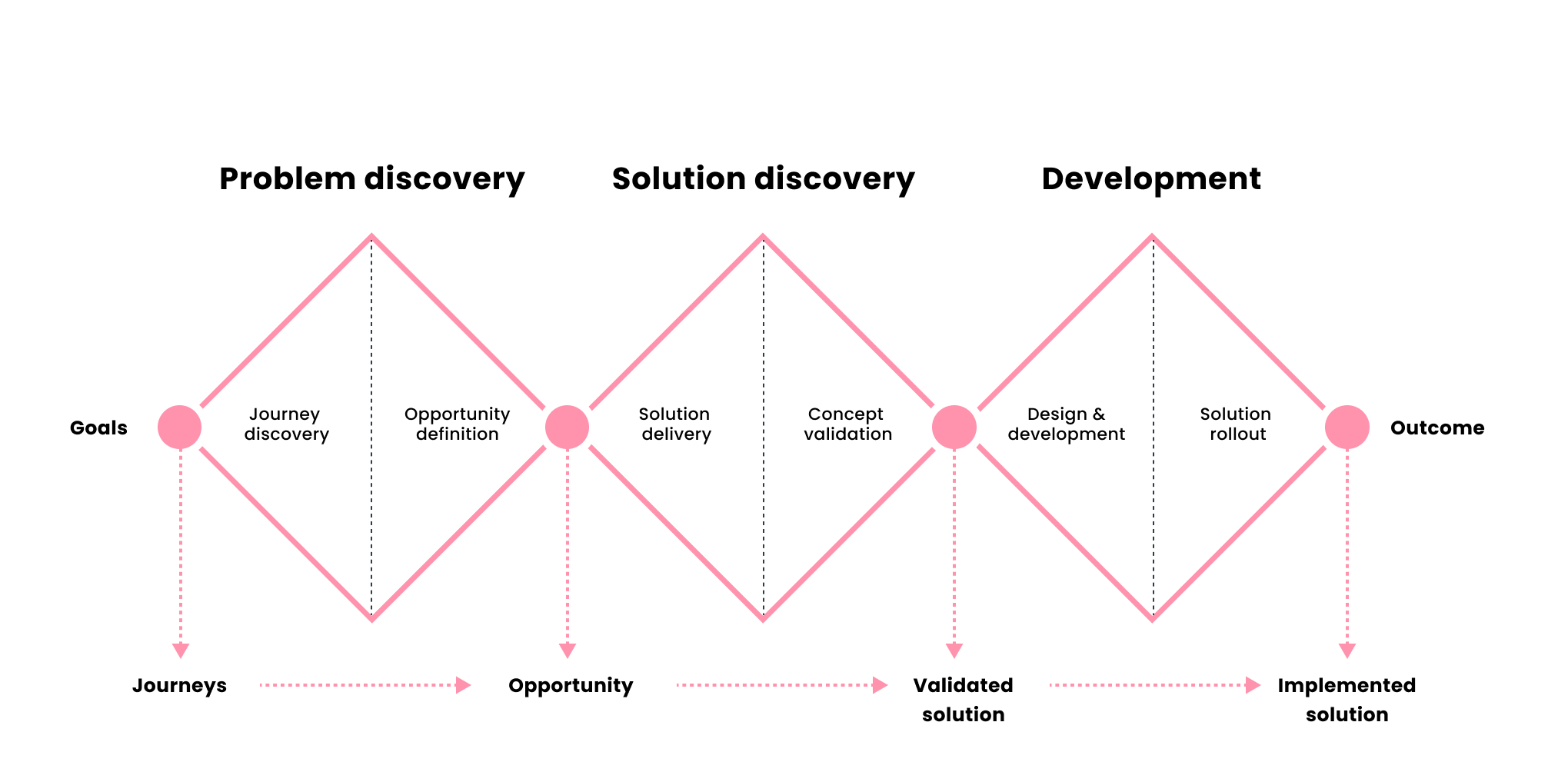The Service Design Process Illustrated with the Comprehensive Triple Diamond Model
I have written a blog post titled Service Design: A Comprehensive Guide for Beginners and Those Already Familiar with the Subject. This article you are reading focuses on one way to describe the service design process using the Triple Diamond Model. The traditional way to visualize the service design process is by using the Double Diamond Model developed by the British Design Council. However, this model overlooks the end-to-end (E2E) perspective, which is particularly crucial in digital-age business. Moreover, the Double Diamond Model often focuses too much on conceptualizing a single service rather than viewing the process through the lens of a customer journey, which may encompass multiple solutions or services. The Double Diamond Model also fails to address detailed design and continuous improvement, areas for which the Triple Diamond Model has been developed. Let’s delve deeper into the components of the Triple Diamond Model.
The Triple Diamond Model
In recent years, the Triple Diamond Model has emerged alongside the traditional Double Diamond Model. The following example, as defined by TheyDo, starts with customer journeys rather than individual services or solutions. A customer journey provides a holistic depiction of the entire path a customer takes, which may include multiple touchpoints where the company interacts with the customer. Touchpoints may include branding, communication, marketing, customer service, advertisements, web services, mobile services, and more. The Triple Diamond Model offers a more holistic approach to design thinking by viewing and designing elements across multiple channels.
Picture: Service design triple diamond model
First Diamond – Identifying the Problem
Unlike the traditional Double Diamond Model, the first phase of the Triple Diamond Model focuses on the entire customer journey, which may span several services. The same principles as in the traditional model apply: the goal is to gather holistic insights about the surrounding world, customers, and the internal organization. A critical element of the Triple Diamond Model is the management and leadership of customer journeys at the organizational level. Instead of focusing on products and services, the focus shifts to customer journeys that incorporate various products/services along the way.
Second Diamond – Defining Solutions
The second diamond corresponds to the concept phase, where ideas are generated, visualized, prototyped, and validated. Unlike a single-channel approach (e.g., designing for mobile), solutions are conceived multi-channel, including web platforms and internal tools.
Third Diamond – Implementing Solutions
What the traditional Double Diamond Model lacks is an implementation phase. The traditional service design approach typically focuses only on the research and concept phases, without considering continuous development or data-driven improvement.
For digital services, the third diamond of the Triple Diamond Model entails detailed user interface (UI) design, including interaction and navigation design, visual elements, icons, text, and special and error scenarios. Alongside UI design, technical implementation occurs, with plans coded and tested before launch. At this stage, the company also defines the data they want to collect about customer behavior.
Work does not end at launch. After release, feedback is gathered from customers, data on behavior is analyzed, and improvements are iterated based on this knowledge.
Conclusion
When is a digital service "finished"? Never. Development ends only when the plug is completely pulled. Therefore, digital services should not be developed as projects with a defined start and end. Instead, they should be continuously improved by adding new functionalities outlined in the roadmap, studying customer behavior through data, and learning what works and what doesn’t.
Feedback loops should incorporate both customer input and internal exploration of customer needs, iterating based on findings to refine usability and functionality. Development takes place at varying levels of abstraction, adapting to the specific situation.
The traditional Double Diamond Model fails to address not only continuous improvement but also the holistic development of the entire customer journey, which often leaves efforts fragmented and not truly end-to-end. As a result, opportunities for business growth across the entire journey may be missed.
When the focus is on customer journeys, internal processes, data, and technical systems are aligned around them. This perspective fosters comprehensive end-to-end thinking, optimizing entire value streams rather than individual features. This approach ensures value creation for both customers and the business.
At the heart of business development should always be people—both customers and employees. The better a company can model the customer journey and its stages and align its operations around them, the more likely it is to ensure business growth and profitability.
